Six years ago, my sister went off to college to study engineering at Cal Poly SLO. During her first few weeks there, she participated in an engineering design competition, won it, and with it, got a shiny plaque with her name on it.
But not just a shiny plaque. She also received a summer internship from the Bay Area company sponsoring the contest.
Besides being an overall epic way to start college, her experience was my first exposure to the idea of internships. Six years later, this article was written to share all the advice and tips I’ve learned since then.
So, what is an internship?
Long story short, an internship is a short, professional apprenticeship at a company. These internships are typically 8-12 weeks long during the summer, with plenty of part-time internships (of varying lengths) happening during the school year. Sometimes, students even take a quarter or semester off of school to work (these are known as co-ops on the East Coast).
During the internship, you work in a professional environment (usually on a project of some sort) and learn how the company works. You then present this project to your broader team or sometimes even a larger portion of the company.
Some companies (usually the larger ones) have formal internship programs that are well-established and have clear recruiting timelines. Other companies (startups) have more informal programs, where networking well and showing initiative are even more important.
The benefits of being an intern are clear – you get professional experience for your resume, a larger network, money (if the internship is paid), and potentially a return internship or a full-time offer if you did well (meaning you can already have a job secured before you graduate from college). You also learn what you like and dislike in a job/company/role, and can begin tailoring your career plans based on firsthand experience.
And what’s in it for the company? They get a great way to find top talent with few strings attached.
If you’re a top intern, the company can offer you a job early and guarantee a smart future employee. And if you don’t turn out to be too great of an intern, they just don’t invite you back full-time. No unemployment or severance required. Internships are therefore a win-win situation for everyone involved.
I was fortunate to learn what an internship was early on from my sister and came into college with the mentality that they were important. I interned the summer after graduating high school on an engagement project for my city. I worked a few internships for startups during the school year at UCLA. And during the summer after my first, second, and third years of college, I interned for 10 weeks at First Republic Bank, Kraft Heinz, and Boston Consulting Group (BCG), respectively.
Here’s how I did it.
If you want to learn more about my recruitment journey, check out my “My Recruiting Journey” article here.
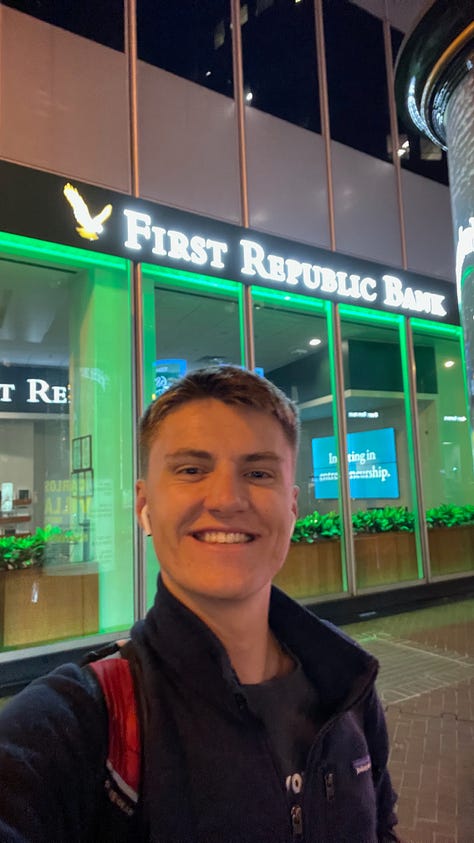
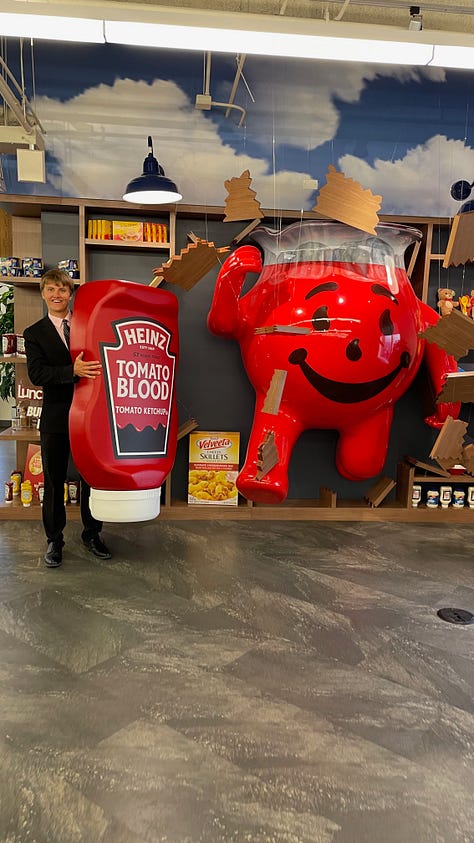

This goes without saying, but to get an internship, you have to apply for them first (shocking, I know). And in my experience, you need to apply for a lot more internships than you think necessary.
Internship job listings are usually released several months before their start dates (for example, Amazon released their Business Analytics internships for summer 2025 just now, in mid-September 2024). Keeping these deadlines in mind is important so that you don’t miss out on some great opportunities.
Most companies with internship programs have their own career pages where you apply for their internships. Other companies use LinkedIn or Handshake to post their jobs. Others don’t have formal internship listings, and you have to kind of reach out to see if you can work there.
In my experience, tech-related internships (SWE, product management, and hardware) usually list their internships through their career websites. If you’re interested in these kinds of internships, I recommend subscribing to the iykyk.careers newsletter and following Mark Benliyan on LinkedIn to stay up-to-date on those timelines.
If you’re interested in more business-related internships (sales, marketing, analytics, business development, etc.), your best bet for getting an internship is applying on Handshake.
In my experience, Handshake is by far the most underrated career resource at UCLA. Nothing else comes even close to it.
What is Handshake, you might ask? It’s basically LinkedIn but focused on specifically helping students get internships and early career jobs.
This is how it works: Companies pay Handshake to list their jobs and opportunities on their service. Universities (like UCLA!) pay Handshake for access to these listings and then give that access to its students for free. Handshake serves as the middleman. The list of schools on Handshake is huge, so it’s almost a certainty your school has signed up.
The end result of all this is that students are given free access to exclusive job opportunities across all industries and companies. Brilliant.
Why use Handshake? Isn’t it the same as LinkedIn?
In theory, yes.
However, in my experience, I’ve found that because LinkedIn is so open, the application pool is extremely saturated (with hundreds of applications for each posting). I personally haven’t met anyone who got a competitive internship through LinkedIn, but plenty through Handshake.
For me, LinkedIn is the place to showcase my accomplishments and experiences (and post random funny things lol), and Handshake is the place to use them to get another internship. Handshake is where I received my internship offers from First Republic Bank and Kraft Heinz (which I accepted). I applied for the BCG internship through their specific career portal.
The rest of this article will be a deep dive into Handshake and how to use it.
Let’s go!
When you open up Handshake, this is what the landing page looks like:
As you can see, there are a ton of different features on Handshake, but the main ones are the ones I’ve circled here: profile, applying, and messaging (I didn’t find the other features to be too useful when I was recruiting).
The profile section is where you create your professional profile for when you apply for jobs and recruiters search for candidates. The applying section is for when it’s time to apply for jobs or attend career fairs. And last but not least, the messaging section is for sending and receiving messages to and from recruiters or hiring managers. Oftentimes, recruiters reach out directly to encourage you to apply for internships at their companies.
Let’s start with the profile section.
When you click the profile button, this menu appears:
The important sections here are “My profile” (MP) and “My documents” (MD). MP is where you list your experiences, skills, and what kind of jobs you’re interested in (very similar to LinkedIn), and MD is where you can upload your resume and cover letter.
The different sections under MP are “Looking For” (where you list what jobs and locations you’re interested in"), “Summary”, “Skills”, “Work Experience”, “Education”, “Courses”, “Projects”, and “Languages”. Feel free to take as much inspiration from my profile as you’d like, that’s what this guide is here for. If you want to copy my exact summary, skills, and “Looking For” but change the names, go for it! It worked for me, and I’m sure it’ll work for you.
Just a few tips about making your profile:
Take the time to actually make it nice. I know it’s not the most fun or glamorous activity, but it is tremendously valuable in the long run. Do it right the first time to minimize the number of rejection emails you get when applying
Make sure you have a business professional headshot and a good header. I recommend the classic [major] @ [university] | Previous @ [previous internships or jobs if they’re well-known]
The earlier you are in your professional journey, the more broad your “Looking For” should be. Be open to new experiences and new industries. Who knows what you’ll find!
Your “Work Experience” section should pretty much be a copy/paste from your resume. If you haven’t made your resume yet and/or want some tips on wording, I recommend checking out my resume article
My philosophy is to list all the courses that you will have taken by the time you start the internship. For example, if it’s September and you’re applying for a summer internship and know you’ll be taking Microeconomic Theory in the spring, add Microeconomic Theory to your courses since you’ll have taken it by the time you start (and will therefore have that knowledge). Only do this if you’re certain what classes you’ll be taking
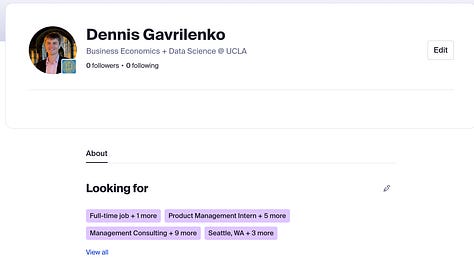
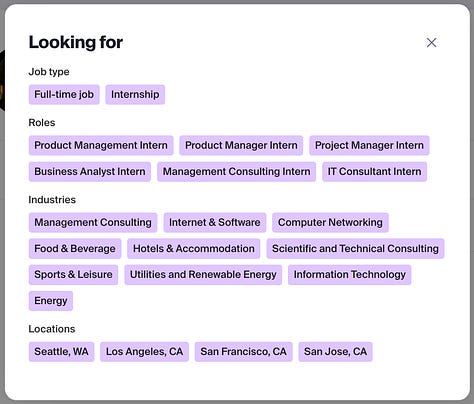
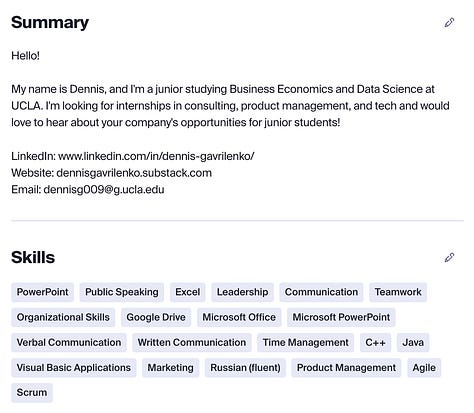

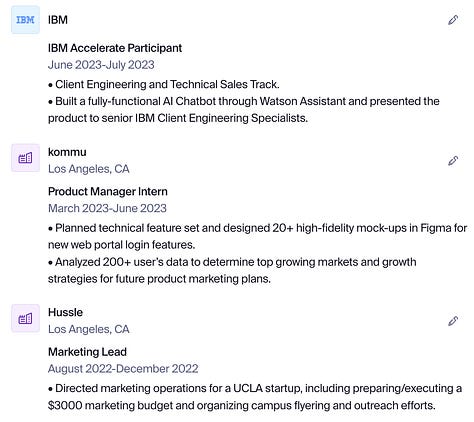




Once this profile is complete, go to “My documents” and upload your resume and unofficial transcript (if you’re a UCLA student, you can download your unofficial transcript on myUCLA under Classes —> Grades and Transcripts —> Transcript - Student Copy (Unofficial)). This will make it a lot easier and faster to apply for jobs later on.
And now, congrats! You’ve made your Handshake profile! Hooray! Time to start applying.
Let’s go back to the initial home screen. We’ll now turn our attention to the “applying” section.
Under the “applying” section, the main two sections are “Jobs” and “Events”.
“Jobs” is where you search for job listings and start applying for them! Since your profile was already created, this can be quickly streamlined to apply for a lot of internships.
Below is a screenshot of what the “Jobs” tab looks like. Here, I’ve filtered to only show internships, but you can filter and search by a bunch of different attributes.
These job listings describe the company, job, pay, and location. To apply, you may need to “Apply Externally”, which will then take you to the company’s specific career page to apply there (as above). For other listings, you can apply straight through Handshake with your resume. Awesome! Quick and easy.


Back on the main page, “Events” is where you can see different recruiting events, both in-person and online. These include career fairs and networking events hosted by specific companies, which you can attend to meet recruiters, get tips for applying, and free merch/food. Here is a screenshot of me clicking on the “Events” page, showing all the upcoming career fairs at UCLA.
If I further click into the UCLA STEM Fair (In-Person), I can see when and where it is, as well as what companies are attending. That’s pretty awesome!
I attended a virtual career fair just like this one my freshman year and learned about First Republic Bank’s internship program through it. Explore around this page, and see what events your school hosts!
One last thing before we part.
As you’re going about recruiting for internships and applying to a lot of different opportunities, don’t feel discouraged by the many rejections that you get along the way. There are hundreds of thousands of college students, many of them looking for internships, and it’s a competitive world out there. You’ll get a ton of rejections, and the key thing is to keep applying and interviewing for more opportunities.
From my personal experience, I’ve found that you get ghosted from about half of the internships you apply for (never hearing back at all), default rejection emails from another third, and interview offers from only 5-10% (yes, I know those don’t add up to 100%). The key thing here is therefore not just the quality of your applications (from your great profile and resume), but also your quantity.
I applied for well over 100 internships during my second and third year at UCLA and got internship offers from Kraft Heinz and BCG as a result. The important thing is to keep applying, keep interviewing, and eventually, those offers will come! The first internship is the hardest to get, after all. After you get the first one, you already have an internship on your resume to help you get a new one.
Best of luck in your internship hunt, and happy applying!
Best,
Dennis
Note: I was not sponsored or anything for this article. I just really like Handshake. However, if someone from Handshake read this and thought “Wow, this article is great, we need to get this guy a t-shirt”, I’m a size Large.





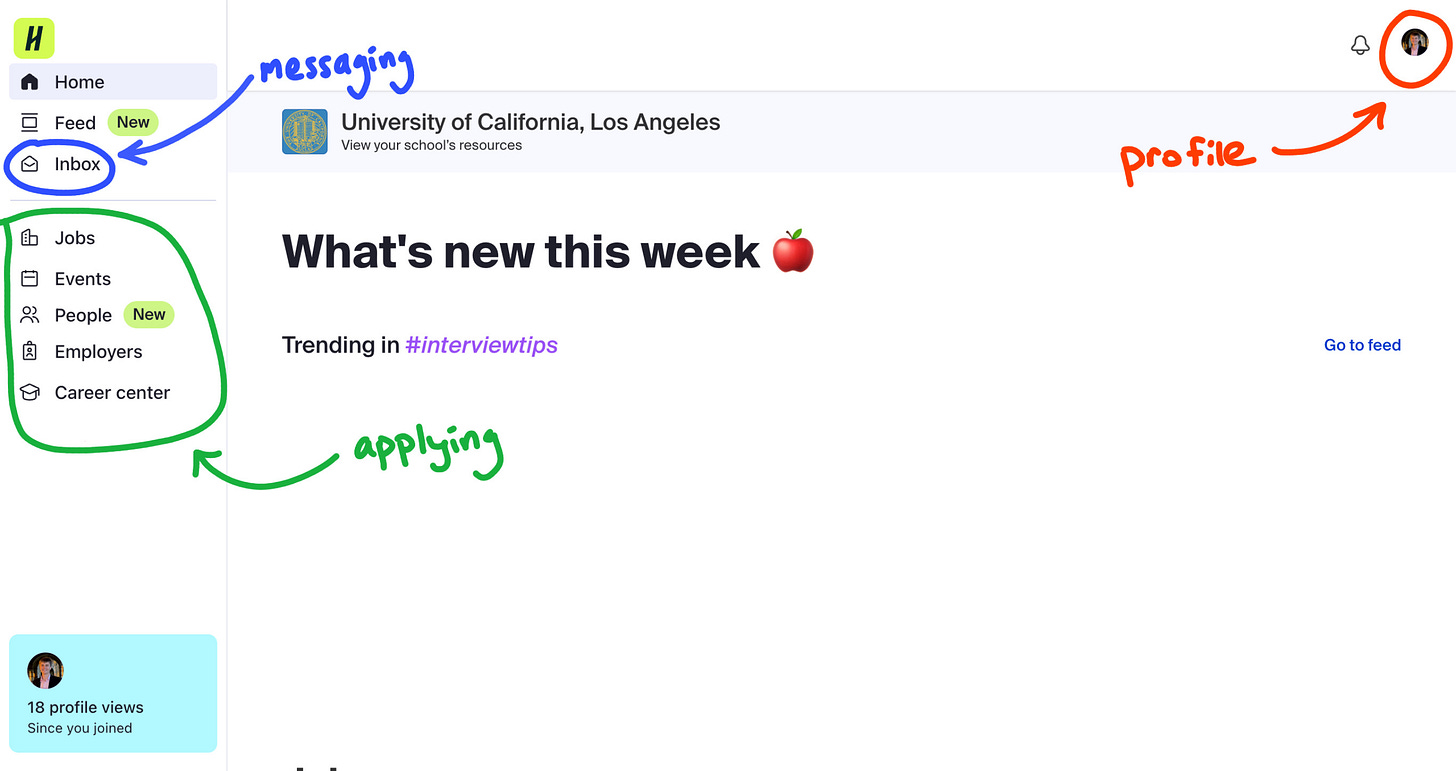

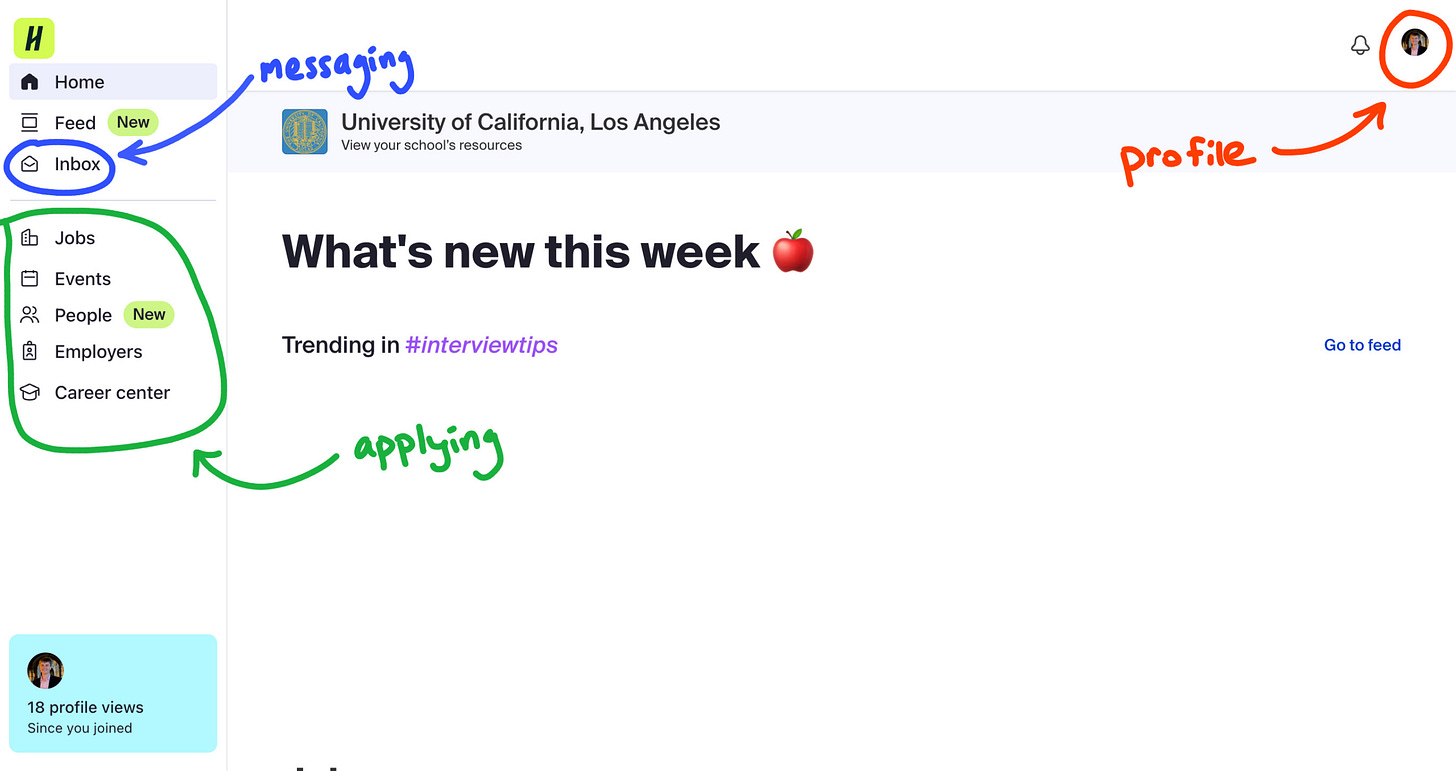

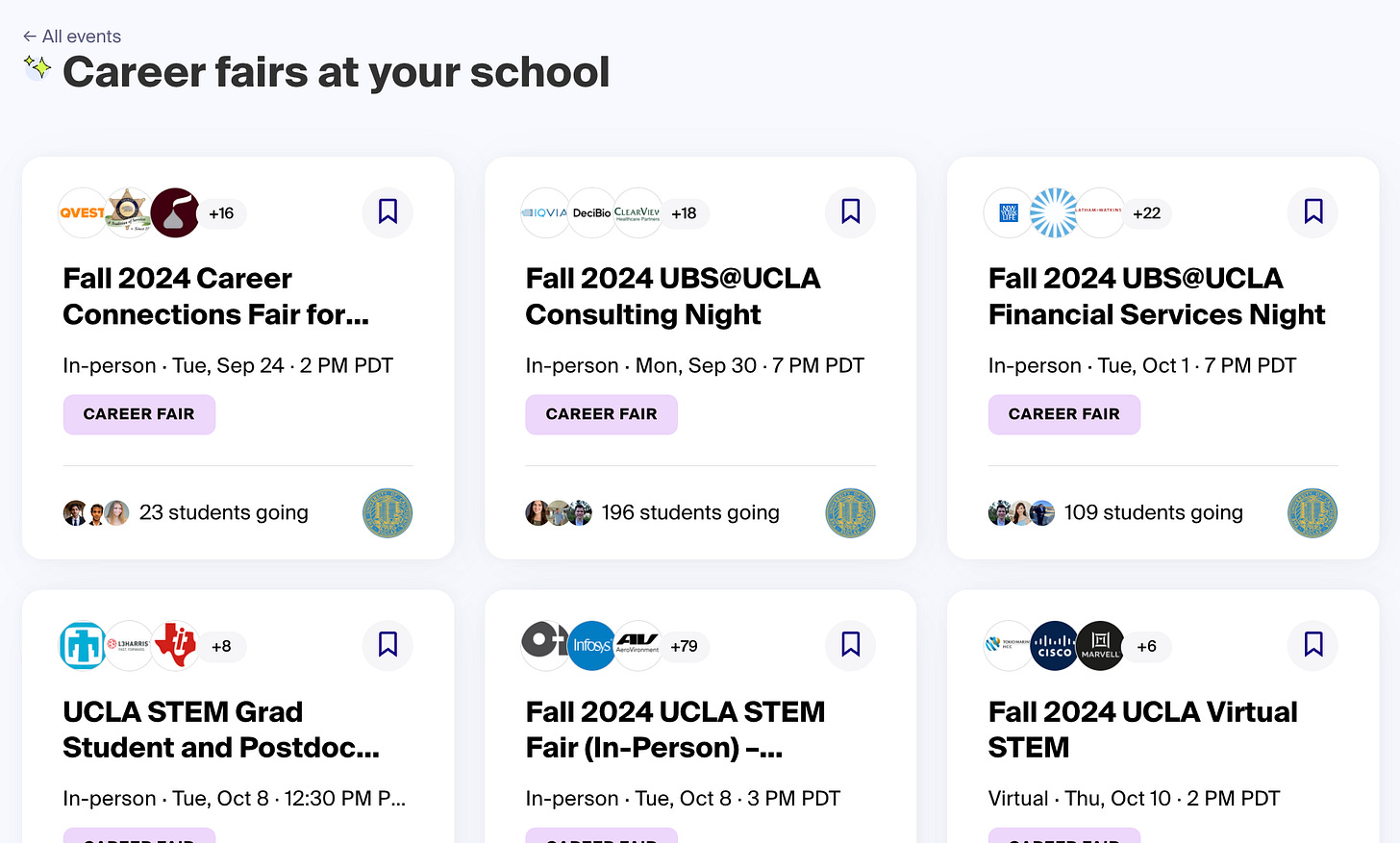
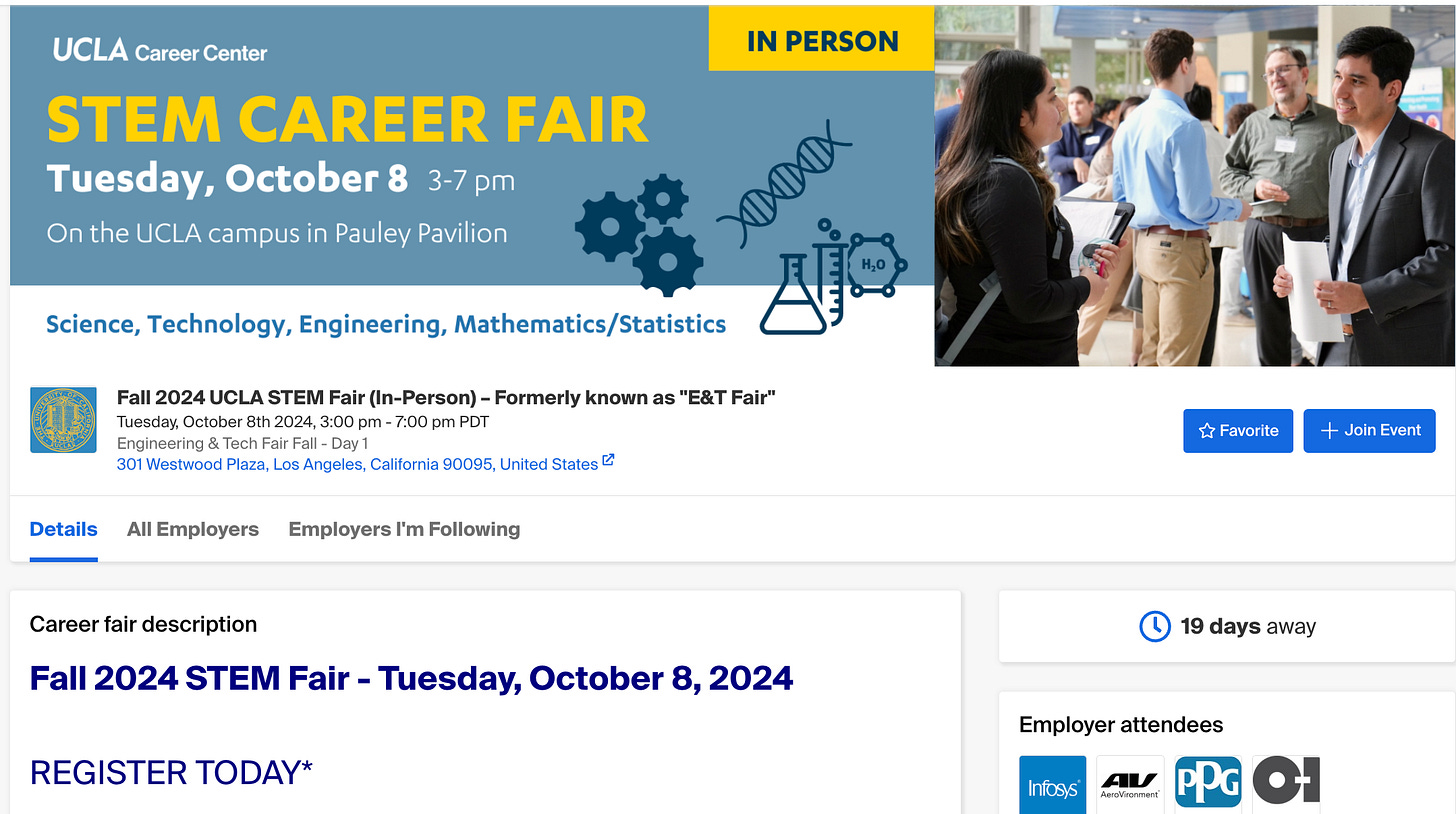
Another value-packed article. Thank you Dennis!